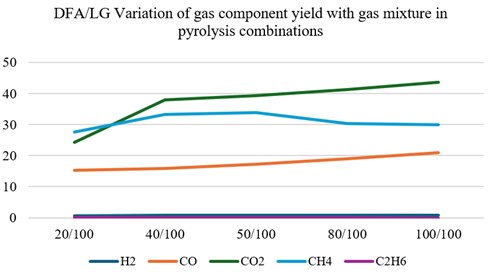Pyrolysis Reaction and Kinetic Analysis of Model Compounds
Abstract
In this paper, Pearson correlation analysis was used to correlate the different mixing ratios of the three pyrolysis combinations with the associated pyrolysis product yields. Then, a paired-sample t-test model was used to explore whether the catalyst DFA plays an important catalytic role in promoting the pyrolysis of CS, CE and LG. In order to address the effect of mixing ratios of pyrolysis combinations on the yields, this paper plotted line graphs with the mixing ratios of pyrolysis combinations as the horizontal axis and the pyrolysis gas yields as the vertical axis, and interpreted the effect of mixing ratios on the yields of each gas according to the trend of each gas.
References
[2] Du, Q., Tang, C. Y., An, X. Y., et al. (2023). Study of catalytic biomass pyrolysis gas extraction from desulfurization ash based on model compounds. Renewable Energy, 41(6), 711-716. https://doi.org/10.13941/j.cnki.21-1469/tk.2023.06.011
[3] Che, Y. F. (2019). Study on the reaction kinetics and catalysts of carbon dioxide hydrogenation to methanol [Dissertation, East China University of Science and Technology].


This work is licensed under a Creative Commons Attribution 4.0 International License.
Copyright for this article is retained by the author(s), with first publication rights granted to the journal.
This is an open-access article distributed under the terms and conditions of the Creative Commons Attribution license (http://creativecommons.org/licenses/by/4.0/).








1.png)














